|
| OO Scale | N Scale | G Scale | Z Scale | HO Scale | Slot Cars & R⁄C |
| |||||||
|
|||||||
| Home Page | |||||||
| BUY GIFT VOUCHERS | |||||||
| Products | |||||||
| Latest News | |||||||
| RIGHT LINES | |||||||
| Bargains | |||||||
| Downloads | |||||||
| Events | |||||||
| Careers & Jobs | |||||||
| Carriage Services | |||||||
| About Us | |||||||
| Contact Us | |||||||
| Pay Us A Visit | |||||||
| Meet The Staff | |||||||
| Links | |||||||
| SHOPPING BASKET |
Your shopping basket is empty. To add an item, click the "Buy" button
| YOUR ACCOUNT | ||
|
||||
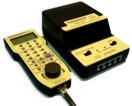 |
||||
| Prodigy Advance Digital System |
||||
| Cased Controllers |
||||
| Panel Mount Controllers |
||||
| Walkabout Controllers |
||||
| Modules & Transformers |
||||
| Scenics & Accessories |
||||
| Wiring & Electrical Components |
||||
| Tiny Signs | ||||
| Tools | ||||
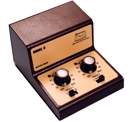 |
||||
| O Scale | Wargaming | Architectural | Narrow Gauge | Tools+ | ||
The Transcontinental Railroad and the Driving of the Golden Spike

STUART JORDAN gives the history of the first railway to link the east and west of the USA.
It was May 10th 1869. The crowd, numbering a couple of thousand, had gathered on an area of high ground north-west of Salt Lake City to see a monumental moment in American railway history. The assembled group of railway engineers, track workers, government and railway officials eagerly awaited the conclusion of one of the most ambitious railway projects of the 19th Century. Finally the West Coast of America would be accessible by rail...
Beginnings
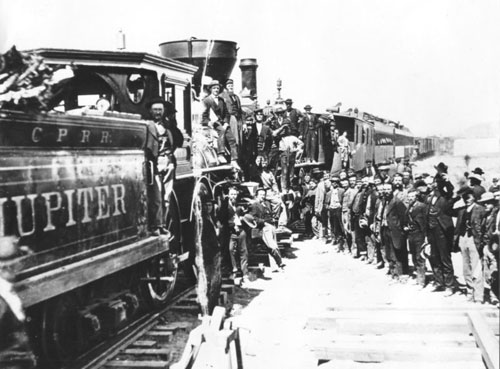
Celebrations on May 10th, 1869.
The story started with the Pacific Railroad Surveys between 1853 and 1855. US Army engineers surveyed five possible routes across the continent. With North and South divided during the civil war the US Government Congress pushed through the Pacific Railroad Act of 1862, which incorporated the Union Pacific Company. Because the Southern Democratic politicians were absent from Congress, they were free to chose a central route (which would otherwise have been opposed if the war was not in progress) rather than a southern route. The route chosen would build across the Great Plains and through the Rocky Mountains.
The Central Pacific Railroad of California was also set up, tasked with building the railway from Sacramento, California back east to meet up with the Union Pacific line being built from Council Bluffs, Iowa on the Missouri river. A 400ft wide right-of-way corridor and land grants along the route were made by Congress. Most of the land that would be built on would be empty desert of no value.
West to East
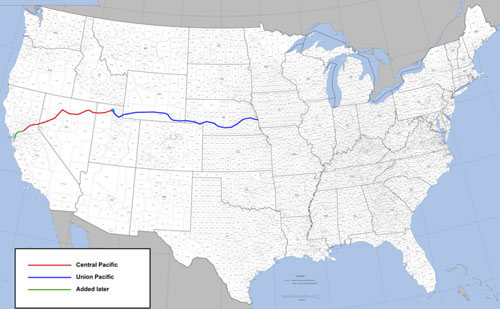
The route of the Central Pacific and the Union Pacific, meeting at Promontory Summit.
The Central Pacific started construction in January 1863 with great ceremony in Sacramento, California. All of the tools and raw materials had to be imported from factories in the Eastern States. Because of the obvious lack of infrastructure this had to be delivered by sea, either sailing right round Cape Horn on the southern tip of South America or by using the Panama Railroad, which preceded the canal.
Shipments of the explosive nitro-glycerine for tunnelling were prohibited by many local harbours after two ships carrying it blew up. Both Railway companies had to learn to produce it themselves.
The route was surveyed, and work started using mostly Chinese immigrant workers. Work would often start on tunnels and bridges before the rail-laying workers got to that point in the route. Fifteen tunnels were built on the Central Pacific. Vertical shafts would be dug, and then tunnels would be cut outwards at the same time as being cut inwards, allowing four sides of the tunnel to be dug at once.
East to West
In the East, the work on the Union Pacific was much easier as it was crossing the Great Plains. With no tunnels to be dug there was no impediment to track-laying, although security had to be strengthened against Native American attacks on the railway workers. They saw the coming of the railway as a violation of their treaties with the US government, and the Union Pacific hired marksmen to kill bison, the primary food source of the Plains Indians, to drive them away from the construction.
The majority of the Union Pacific labourers were veterans of the recent Civil War, as well as many Irish immigrants. As the line approached Salt Lake City in Utah a large number of Mormons joined the work parties; keen to bring the railroad, and the associated money, to the area.
Connection
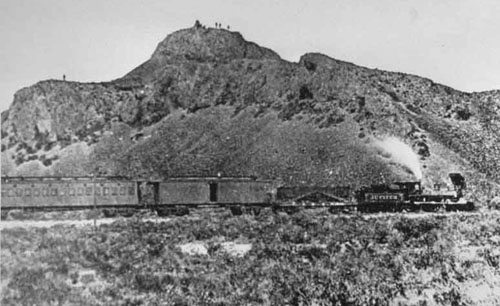
Jupiter carrying Leland Stanford, owner of the Central Pacific, and other dignitaries to the Golden Spike ceremony. Native Americans watch from the hilltop.
The two railway lines snaked towards each other across the continent, and after six years they met at Promontory Summit, Utah, with the two locomotives UP No. 119 and CP No. 60 ‘Jupiter’ meeting at the point the two lines joined. The ceremony was held on May 10th, 1869, and Leyand Stanford, President of the Central Pacific Railroad, drove a Golden Spike into the final sleeper (a spike being a large nail which holds the rail to the sleeper). The single word ‘DONE’ was flashed around the country by telegraph, and the east was finally joined to the west.
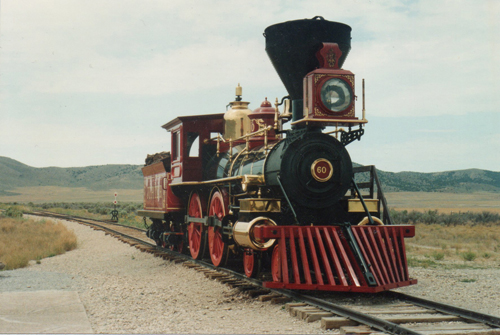
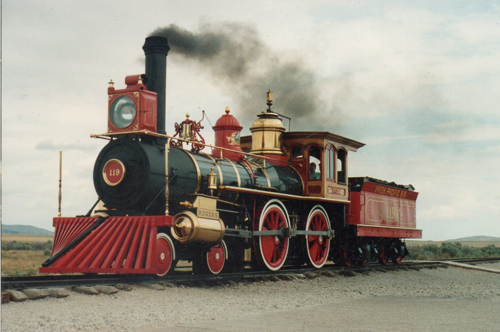
The replicas of Jupiter (top) and No 119 (bottom) as they appeared on my visit in 1989. Although at the time I was barely taller than the con rods...
The line through Promontory Summit was bypassed in 1904, but in 1957 the Golden Spike National Historic Site was created, and working replicas of the locomotives No. 199 and Jupiter were built. The ceremony is now re-enacted every Saturday for visitors.
US Outline from Gaugemaster
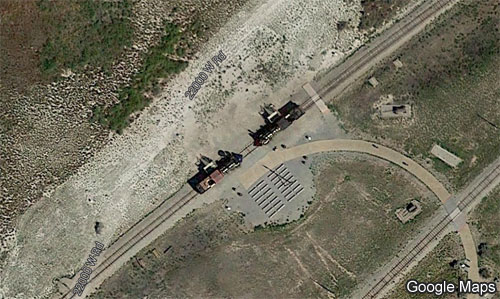
I've invented a new hobby; online trainspotting. It saves on travel costs and getting rained on... Here are the replicas of No. 119 and Jupiter as they appear on Google Maps!
The route map in this article is used under the GNU Free Documentation Licence.
|
We are always looking to make improvements to our website to try and improve the quality of your visit. We would welcome your feedback and suggestions, so please do not hesitate to e-mail our webmaster with your comments. Alternatively call us on 01903 884488.
Home Cookies Privacy Statement Terms & Conditions Site Map Site Guide
WEEE Regulations Glossary Careers & Jobs
Tel – +44 (0) 1903 884488 Fax – +44 (0) 1903 884377 E-Mail us – click here
Gaugemaster.com is a trading name of Gaugemaster Controls Ltd.
Registered in England No. 2714470, Registered office:
Gaugemaster House, Ford Road
Arundel, West Sussex, BN18 0BN, United Kingdom
VAT Reg. No. 587 8089 71
Copyright © 2003-2014 Gaugemaster Controls Ltd. All Rights Reserved.

















